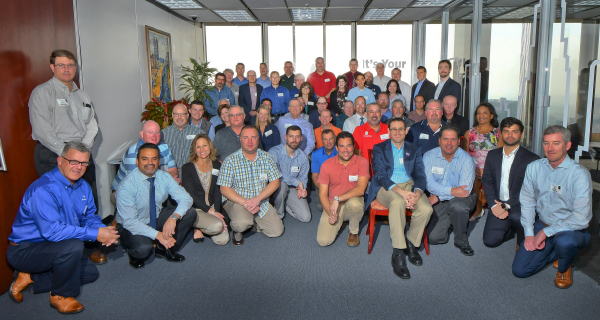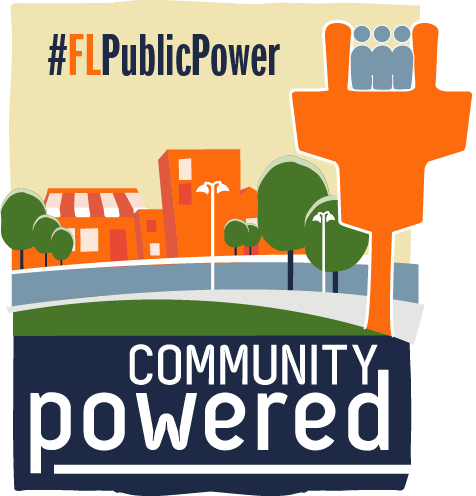Mutual Aid Exercise Tackles Scenario Involving Major California Flooding
The American Public Power Association on Oct. 29 held a public power mutual aid exercise in which participants role played a scenario that involved significant flooding in several California cities.
Representatives from more than 30 public power utilities and joint action and state associations participated in the Association’s Mutual Aid Working Group (MAWG) national event, which was held in Los Angeles.
The Los Angeles Department of Water and Power served as the host for the exercise and provided significant logistical support.
The exercise was funded by a cooperative agreement with the Department of Energy.
“Whether it is wildfires or major hurricanes, public power’s mutual aid efforts have proven successful time and time again,” said Michael Hyland, Senior Vice-President of Engineering Services at the American Public Power Association.
“But we know that we can’t rest on our laurels when it comes to being prepared to respond to as many different types of events that would require mutual aid assistance to kick in,” Hyland said. “That is why exercises such as this are so important.”
The Association’s MAWG comprises representatives from public power utilities, state associations, and joint action agencies. The goal of the MAWG is to advance public power’s mutual aid and disaster management best practices for large-scale events.
Exercise included 52 participants
The California public power utilities that were impacted in the simulation were LADWP, Moreno Valley Utilities, Vernon Public Utilities, Sacramento Municipal Utility District and Modesto Irrigation District. There were 52 participants representing 36 different public power utilities and joint action\state associations.
The scenario involved an atmospheric river event in California. The resulting rains flooded much of the central valley including the cities of Sacramento, Stockton, and Modesto. In addition, the Los Angeles area suffered damage from 200 to 500-year flooding levels and windstorms. The scenario was based on data from 1862 and the “Pineapple Express” rain event, which flooded California.
In the exercise, SMUD was hit the hardest. The month-long flooding in the scenario was so bad that the state capitol was temporarily moved out of Sacramento.
Along with officials from the American Public Power Association and representatives from California and other public power utilities, there were also five representatives from the Edison Electric Institute, National Rural Electric Cooperative Association, DOE and the California Utilities Emergency Association.

Participants in the exercise discussed several topics including:
- Public utility response to a major disaster;
- Lodging and support requirements for mutual aid;
- Resource coordination and sharing through mutual aid;
- Reporting and situational awareness;
- Organizational relationships;
- Strengthening relationships between utilities and other industry and federal organizations;
- Budgeting requirements in anticipation of future events
Messages were sent by Association staff to Mutual Aid Working Group
As part of the scenario, a series of listserv messages were sent by Sam Rozenberg, the American Public Power Association’s Engineering Services Security Manager, on Oct. 29 to the Association’s Mutual Aid Working Group, simulating what would occur in a real-world event.
The messages included updates from various public power network coordinators as well as a link to a a shared spreadsheet for exercise participants to detail what resources they had available.
Exercise activities
LADWP Power System Executive and Office of Emergency Management staff participated in the LADWP Utility exercise group, noted Lisa Hayes, Emergency Preparedness Coordinator at LADWP, who was a participant in the exercise.
The group was tasked with responding to pre-disaster planning, immediate response and the recovery phases of a federally declared disaster involving major flooding in California.
Hayes said that the LADWP Utility exercise group addressed the following tasks during the exercise play:
- Pre-disaster planning: (Address messaging and media inquiries; create an incident management organization and develop response plans in advance of adverse weather; identify resource shortages; anticipate the need for additional resources; and engage mutual assistance networks and emergency contracts).
- Response: (Account for employees, establish area command to address impacts to LADWP infrastructure; identify and prioritize objectives; provide safety messaging; communicate with the government, the public, and employees; ensure proper handling of fatalities; secure incidents and protect facilities; and ensure protection for employees engaged in response through local law enforcement resources).
- Recovery: (Continue to support work force and provide safe working conditions; accommodate mutual assistance responders; collect documentation; identify resource shortages and re-establish inventory; continue restoration; and support the local evacuation/repopulation effort).
Another participant in the exercise was Rick McKinley, electrical operations superintendent at the Kirkwood Electric Department in Missouri, and MAWG chairman.
For the exercise, he was placed on a team comprised of employees from a public power utility in California. Each team member was tasked to represent a role in the exercise, he noted. McKinley was tasked with the role of field manager.
What worked well
What worked particularly well in terms of exercise activities? Hayes said that the teams were well grouped to provide subject matter expertise and simulate a response network between impacted utilities, state and federal resources, as well as mutual assistance providers.
She also said that participants were able to gain a better perspective of West Coast response capabilities and potential needs and exercise materials were very descriptive and customized to the various groups.
McKinley felt the action of moving to another table to seek assistance from another organization helped convey the required movements during an actual event. He also thought the breakup of teams and assigning of roles was beneficial.
Lessons learned
In terms of the key lessons learned from the exercise, Hayes said that the exercise provided a better understanding of the importance of a timely and sufficient mutual assistance resource requests and ensuring that the American Public Power Association, and not just California and Western area mutual assistance networks, is included in the communication chain when contemplating mutual assistance.
For McKinley in his role as MAWG chairman, it was important to spread the word to utilities that hadn’t had much interaction with mutual aid. Being able to speak with another new group of potential mutual aid players was invaluable, he said, noting that spreading the word about all the positives surrounding mutual aid is one of his primary objectives these days.
Next steps
The after-action report team for the exercise will be meeting in mid-November with a report on the exercise set to be completed in early December.
For more information about the Association’s mutual aid program, click here.
Reposted with permission from Public Power Daily
 Enter your email address in the
Enter your email address in the 